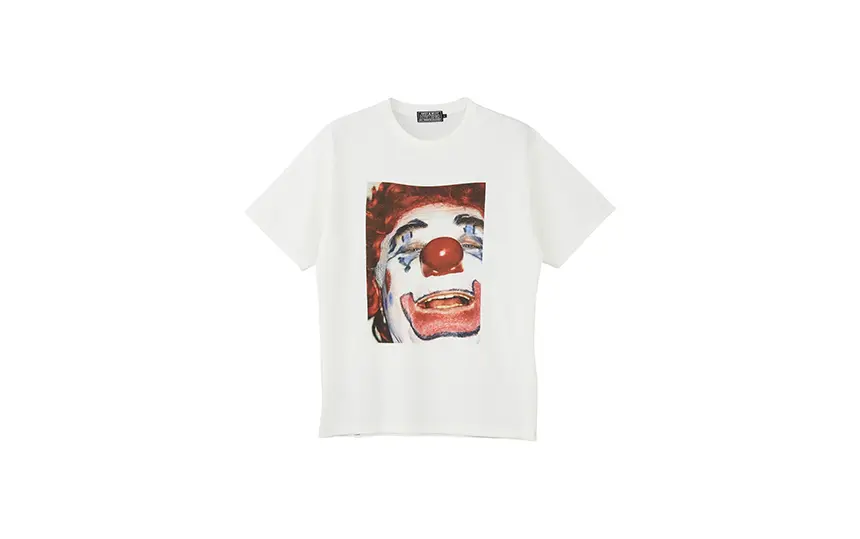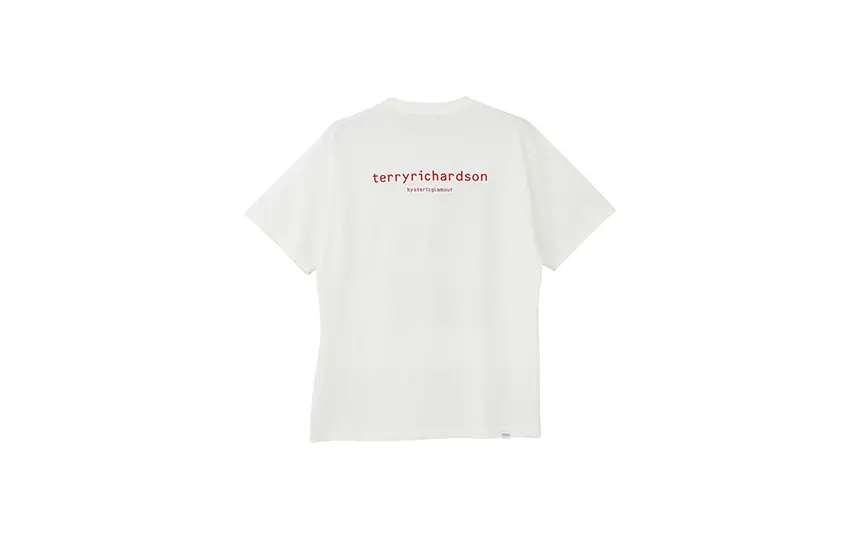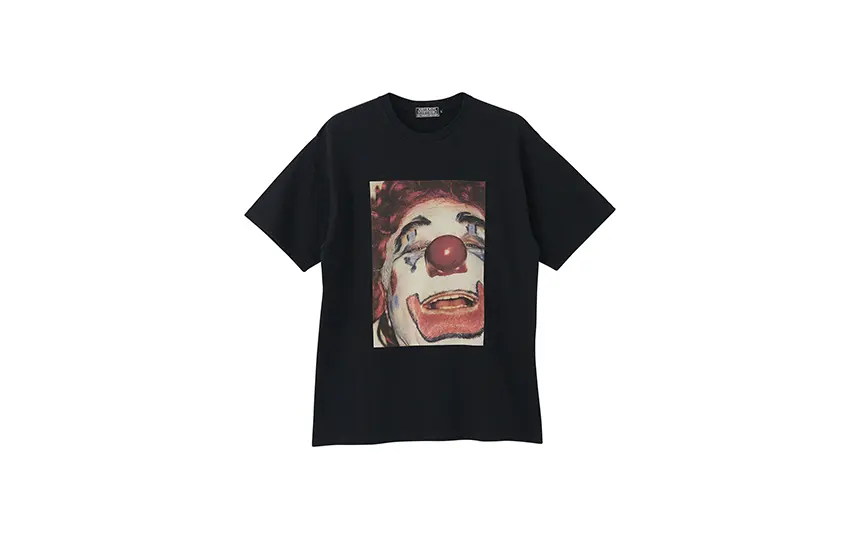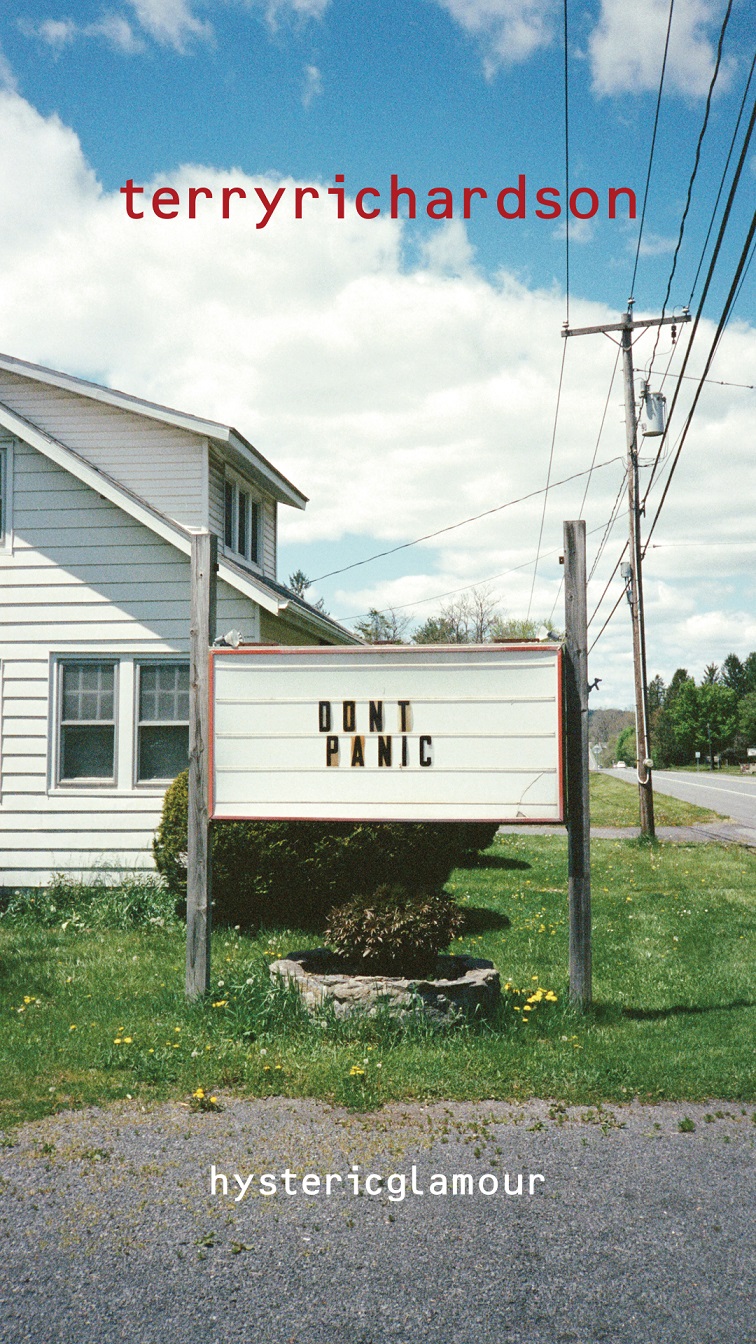
写真界の巨匠、テリー・リチャードソンと北村信彦が邂逅。1990年代からおよそ30年にわたり親交の深い2人だが、テリー自身、8年ぶりとなる写真展を、HYSTERIC GLAMOUR SHIBUYAで開催! 東京に着いて間もないとテリーと北村の貴重なクロストークをお届けします。
Terry Richardson, a master in the world of photography, and Nobuhiko Kitamura have been close friends for 30 years since the 1990s, and Terry himself will hold his first exhibition in eight years at HYSTERIC GLAMOUR SHIBUYA! We are pleased to present a rare crosstalk between Terry and Kitamura, who has just arrived in Tokyo.
Interview & Text: Hiroshi Kagiyama
Translation: Momoko Ikeda
——お二人が会うのはいつ以来ですか?(When was the last time you two met?)
北村信彦(NOBU):
最後に会ったのはたしか7〜8年前にNYで、それ以来だね。
Nobuhiko Kitamura (NOBU): The last time I saw him was in New York about 7 or 8 years ago, and I haven't seen him since.
テリー・リチャードソン(TERRY):
ちなみに、NOBUと最初に会ったのは、1994年だったかな、東京だったよね。『チャーリーズ・エンジェル』みたいなバンで、空港までNOBUが迎えに来てくれたんだよね。あのバンはまだ持ってる?
Terry Richardson (TERRY): By the way, the first time I met NOBU was in Tokyo in 1994, right? NOBU picked me up at the airport in a van that looked like something out of Charlie's Angels. Do you still have that van?
NOBU:
あれはHYSの社用車のバンで、だいぶ前に車を変えたから、もうないんだよね。その当時、テリーとはまだ会ったことがなかったけど、雑誌の『DUNE』の企画でHYSの撮影をしてもらったことはあったんだ。チャーリーこと編集者の林くん(注:『DUNE』編集長の林文浩氏)がテリーのことを紹介してくれたのが最初だった。
That was our company car, and we changed the car a long time ago, so it's no longer there. At that time, I had not yet met Terry, but he had done a photo shoot for HYS for a project for “DUNE” magazine. Charlie, or Mr. Hayashi, the editor of the magazine (Note: Fumihiro Hayashi, the editor-in-chief of “DUNE”) was the first person who introduced me to Terry.
TERRY:
“Charlie Brown”(注:林文浩氏の愛称)だね。コンピュータもメールもない時代だったから。
“Charlie Brown” (note: nickname for Fumihiro Hayashi). It was a time when there were no computers and no e-mail.
NOBU:
『DUNE』の創刊当時、編集長はまだ林くんじゃない別の人で、その初号にHYSが広告ページを出したんだけど、出版が遅れたり、印刷の質もよくなくて不本意だったんだよね。その後、2号目から林くんが編集長になるということで謝罪しに来てくれて、次の号にタダでHYSの広告ページを設けてくれることになって。それで、HYSにとって最適なフォトグラファーとして林くんが紹介しくれたのが、テリーだったんだよ。写真を見てすぐに気に入って、それから数回、テリーにお願いしたよ。あの時は、初めて東京で撮影する企画があった時だね。
At the time of the first issue of DUNE, the editor-in-chief was someone other than Mr. Hayashi, and HYS placed an AD in the first issue, but the publication was delayed, and the quality of the printing was not good, and we were not happy about it. Later, when Mr. Hayashi became the editor-in-chief for the second issue, he came to apologize to us and offered us a free HYS advertising page in the next issue. And he introduced me to Terry as the best photographer for HYS. I liked his works right away and asked Terry several times after that. That was when we had our first project to shoot in Tokyo.
TERRY:
ということは、NOBUと会って今年でもう30年ってことだよね?…すごいね! HYSが初期の頃からたくさん撮影してきたから、出会った当時の具体的なことはあまり思い出せないけど、映画の『ブレードランナー』を観て育ったから、劇中の舞台のイメージソースになった東京にはずっと行ってみたかったんだ。それで、最初に来た時、撮影してから2週間ぐらい東京にいたんだけど、NOBUとはそこで初めて会った瞬間から感覚的に繋がって、すごく自然に馴染めたんだよね。それで、一緒にドライブしたり、パーティに行ったりしたんだけど、それ以来、NOBUとずっといい関係性でいられているし、いつ会ってもハングアウトできる関係だよ。
That means it's already been 30 years since I met NOBU, right? ...That's amazing! I've been shooting a lot since the early days of HYS, so I can't really remember specifics of when we met, but I grew up watching the movie “Blade Runner” and I always wanted to visit Tokyo, which was the source of inspiration for the setting in the movie. When I first arrived, I was in Tokyo for about two weeks after the shooting, and from the moment I first met NOBU there, we had a sense of connection, and it felt very natural. We drove around together, went to parties, etc. Since then, I've had a great relationship with NOBU, and we hang out whenever we can.
NOBU:
『DUNE』の2号目から5〜6回、撮影をしてもらったんだけど、次のステップに進みたくて、HYSからテリーの作品集を出版しようということになったんだよね。
I had Terry shoot for HYS for five or six times starting with the second issue of “DUNE,” and we decided to take the next step and publish a collection of Terry's work from our brand.
TERRY:
そうだね、1997年かな。それまで作品集を作ったことがなかったから、自分の初めてのフォトブックがHYSTERICから出版したものだったんだ。アートディレクターと一晩じゅう写真を編集して、レイアウトを決めて、すごくエキサイトしたのを覚えているよ。即興で作り上げていく感覚が自然に起こったことが、よりいいものに仕上がったと思う。バンドのファーストアルバムみたいなものだから(笑)、当時あった自分のエネルギーがその本にすべて注がれていると思う。人のエネルギーというのは、仕事を通して見えるものだよね。
Yes, I guess 1997. I had never made a book of my work before, so my first photo book was published by HYSTERIC GLAMOUR. I remember how exciting it was to work with the art director all night editing the photos and deciding on the layout. I think the sense of improvisation and making it up as we went along came naturally, which made it even better. It's like a band's first album, so I think all my energy that was there at the time was poured into that book. People's energy is something you can see through their work.
NOBU:
俺たちが住んでいる場所は東京とNYで違うけど、同世代でもあるし、『DUNE』を通して知り合って一緒に撮影して、ハングアウトもした。でも、広告は広告でしかないわけだから、その後に一緒に作った作品集では、僕たちとして何かの証しを記録したかったんだと思う。
We live in different places in Tokyo and New York, but we are of the same generation, and we met through “DUNE” and shot together and hung out. But an advertisement is just an advertisement, and I think we wanted to record some kind of proof of our work in the collection we made together afterwards.
TERRY:真実をね。
Yes, exactly .
NOBU:
未来に向けて、もし自分たちが死んでも、その本は残るということにしたかった。
For the future, we wanted to make sure that if we died, the book would remain.
TERRY:
率直に、その時の真実がその本の中に込められているよね。他のフォトグラファーも数多くいる中で、NOBUが自分のことを信用してくれて、チャンスをくれたから、あの作品集が実現できたんだ。それに、HYSは素晴らしいアーティストたちとともに作品集を出してきていて、カルチャーの布石を打ってきているよね。
Honestly, the truth of that time is contained in the book. Although there were many other photographers, NOBU believed in me and gave me a chance, which made this collection of work possible. Additionally, HYS has been releasing collections of works with great artists and is laying the groundwork for culture.
NOBU:
初めてテリーの写真作品を見た当時に思ったのが、いずれたくさんの人たちがテリーの作品のテイストを好きになる、ということを確信したんだよね。音楽みたいなもので、たとえば個性の強いシンガーソングライターのことを一部の人たちが熱狂的に好きになるように、すごく新しくて、いい毒性もあって、そんなテイストをミックスした感覚があったんだよ。
At the time when I first saw his work, I was convinced that eventually a lot of people would like the taste of Terry's work. It was like music, for example, where some people like singer-songwriters with strong personalities with great enthusiasm, and there was a sense of mixing those tastes in a very new and good energetic way.
TERRY:
HIGH & LOWってことかな(笑)。NOBUは、自分を含めたいろんなアーティストが新しい表現や作品を発表できる場を設けてくれて、それが本当に素晴らしいと思うし、感謝しているよ。何より、一緒に作品が作れて本当に楽しいしね。その後にも、僕の個展を東京でやってくれたよね。
Like HIGH & LOW! I think it's wonderful that NOBU provides a place for artists including myself to express ourselves and present our works in a new way, and I am grateful for that. Above all, I really enjoy working with him. After that, you did a solo exhibition of mine in Tokyo.
NOBU:
RAT HOLE GALLERYでね(注:2008〜2020年、HYSTERIC GLAMOURが運営していた現代アートを展示紹介するギャラリー)。
At the RAT HOLE GALLERY (Note: This gallery was operated by HYSTERIC GLAMOUR from 2008-2020 to exhibit and present contemporary art).
TERRY:
『MANIMAL』っていう展示のタイトルで、作品集も作ってくれたよね。NOBUとは長いこといい関係性が続いていて、今回もこうして写真展が実現して嬉しいよ。今、アップステイトに住んでいるんだけど、今回の展示では新しい作品をすべてミックスしたんだ。直感的に、何を表現すべきか、ということを編集すること自体が好きだから。自分の子供ができたりして人生が変わった今、ここで発表できる機会が持てて光栄だよ。
You also made a book of my work under the title of “MANIMAL.” I've had a good relationship with NOBU for a long time and I'm glad that we could do this exhibition together. I'm living Upstate right now, and this exhibition is a mixture of new work and some older work. I like to edit intuitively figuring out what to express. I'm honored to have the opportunity to present my work here, now that my life has changed with the birth of my children.
――HYSと長い歴史と親交の深いテリーさんが、今回の写真展を行うきっかけは、どんなことだったんですか?(With your long history and close friendship with HYS, what was the impetus for this exhibition?)
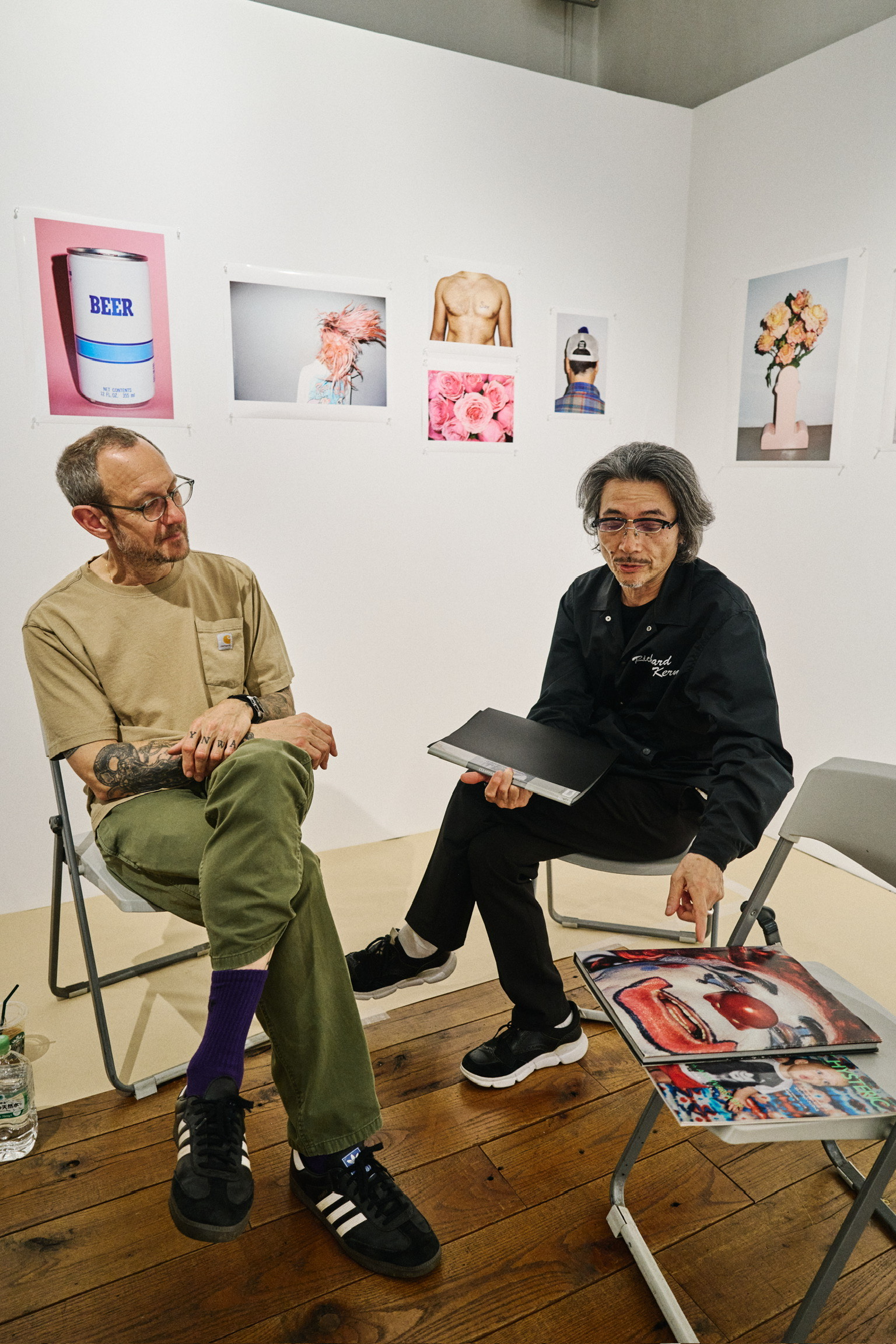
NOBU:
ここ5年で起こったことを考えてみると、世界的にパンデミックがあったり、いろんな問題が巻き起こった中で、ファッションシーンもすごく変わったと思う。ファストファッションの潮流があったり、雑誌とかのメディアから育つカルチャーもなくなってしまった。でも、若い世代は、物心がついた頃からSNSやスマートフォンに触れてきて、デジタルで育った彼らがアナログレコードみたいなフィジカルのカルチャーに意識が向いてきているよね。ただ、彼らは、どうやって印刷物とかプリントのようなフィジカルなものに落とし込んで表現すればいいのかはよくわかっていないようにも感じる部分があって。だから、テリーがこうやって戻ってきてくれて、写真作品をプリントで展示してくれることは、いいタイミングだと思う。ファッション業界の人たちはテリーのことをもちろん知っているけど、今回は特に若い世代の人たちにこの展示を見てもらいたいんだ。ファッションとか広告とか、商業的な側面を抜きにして、テリーのようにフリースタイルで新しいコンテンポラリーフォトを撮るということを、若い人たちが見て、何かを感じ取ってもらう場になればと思っているんだよ。
When I think about what has happened in the past five years, the fashion scene has changed dramatically during the global pandemic and various other issues. There has been a trend toward fast fashion, and the culture that grew up from magazines and other media is gone. But the younger generation has been exposed to SNS and smartphones ever since they can remember, and they are becoming more conscious of physical culture like analog records, having been raised on digital media. However, I feel that they don't really know how to express themselves in physical things like printed matter. So, I think it is good timing for Terry to come back like this and exhibit his work in print. Of course, people in the fashion industry know Terry, but this time I want the younger generation in particular to see this exhibition. I hope it will be a place where young people can see and feel something about Terry's freestyle and new contemporary photography, without the commercial aspect of fashion or advertising.
TERRY:
素晴らしいね。
That's wonderful.
――今回の作品展のタイトルにした「dontpanic」(注訳:落ち着いて)には、どんな思いが込められていますか?(What is the meaning behind the title of this exhibition, “dontpanic”?)
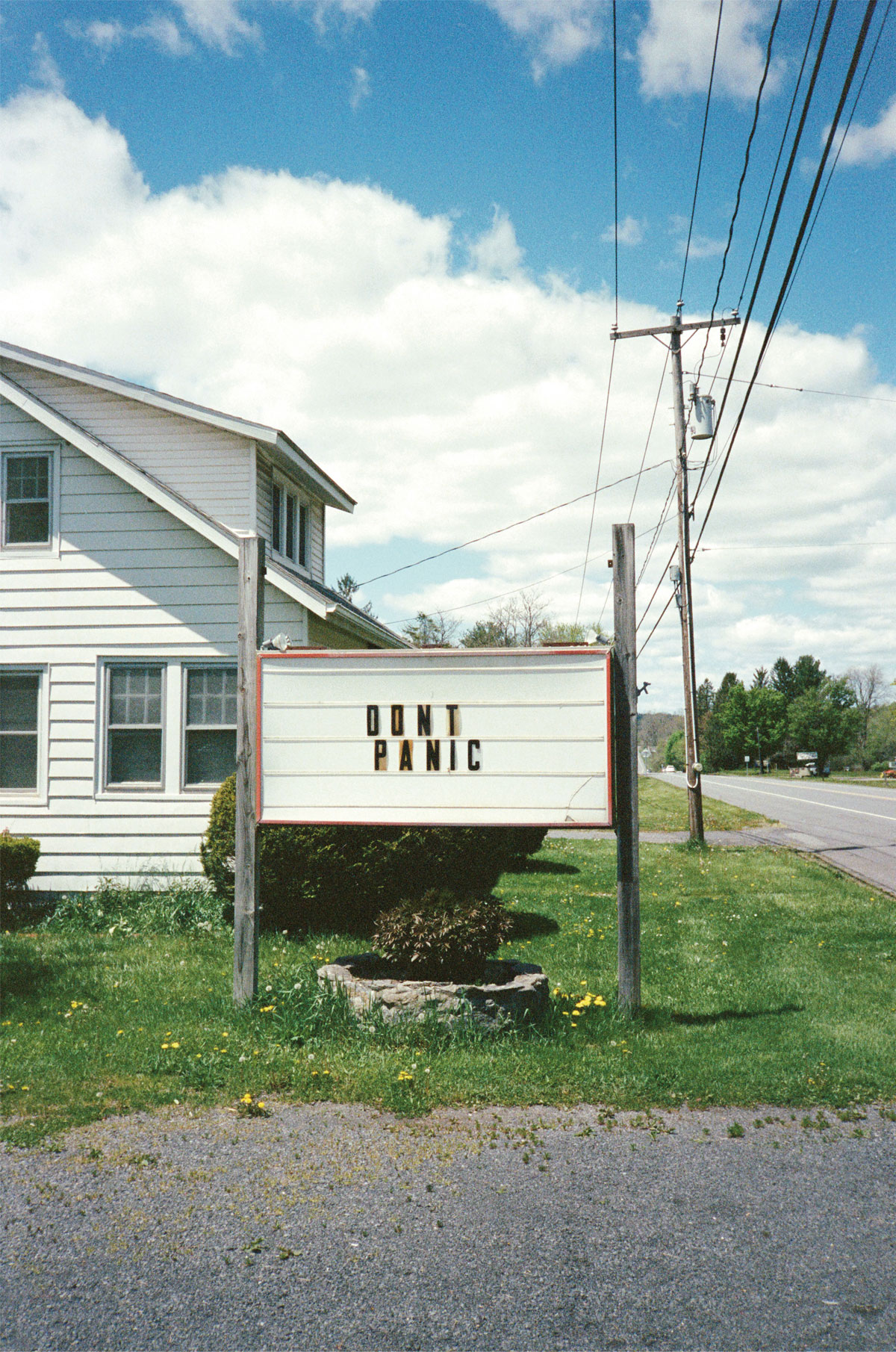
TERRY:
この写真(DONT PANICと掲げられた看板がある風景作品)は、パンデミックの頃、アップステイトを車で運転していた時に見かけたもので。今回の写真展で伝えたいメッセージが込められている気がしたんだ。
I took this photo (a landscape piece with a sign that read DONT PANIC) when I was driving Upstate during the pandemic.
NOBU:今の時代に相応しいタイトルだよね。
It's an appropriate title for now.
TERRY:いいメッセージだと思う。
I think it's a good message.
――では、今のファッションフォトやアートフォトのシーンは、お二人から見てどう感じていますか?(So, how do you feel about the current fashion and art photography scene?)
TERRY:
NOBUはどう思う?
What do you think, NOBU?
NOBU:
たとえば、写真の歴史で考えると、ペイントとかドローイングとかの絵画の後に写真という技術が生まれて、報道写真とか広告写真が台頭した1950〜60年代はどんな写真家にもたくさん仕事があった時代だった。でも、ベトナム戦争で写真家たちの仕事が一気になくなって、その反動としてストリートで写真を撮るカルチャーが生まれたわけで。その流れから、60年代後半〜70年代頭ぐらいに、アメリカのコンテンポラリーフォトの歴史が始まったのと同時に、日本でも荒木経惟さんとか森山大道さんとか中平卓馬さんたちが登場して、日本の現代写真の時代が始まったわけでしょ。ここ最近の5年は、ファッションシーンとかファッションカルチャーの状況は決してよくないけど、もしかしたらそんな60年代後半当時の状況に似ているのかもしれない。みんなデジタルが当たり前の今、写真のフィルムとか印画紙が高価なものにはなってしまったけど、もし若いアーティストが写真なりペインティングなりに没入したら、新しい現代作品なのか作家が生まれるいいタイミングだと思う。過去に戻るってわけではないけれど。
For example, in the history of photography, the technique of photography emerged after painting and drawing, and during the 1950s and 1960s, when news photography and advertising photography emerged, there was plenty of work for any photographer. However, the Vietnam War put photographers out of business, and as a reaction, a culture of taking pictures on the streets was born. This trend led to the history of contemporary photography in the U.S. in the late 60s and early 70s, and at the same time, the era of contemporary photography in Japan began with the appearance of Nobuyoshi Araki, Daido Moriyama, and Takuma Nakahira, right? The situation in the fashion scene and fashion culture in the last five years has not been good, but perhaps it is similar to the situation in the late 1960s. Now that digital technology is the norm for everyone, photo film and photo paper have become expensive, but if young artists immerse themselves in photography and painting, I think this is a good time for new contemporary works and artists to be born. It does not mean going back to the past.
TERRY:
昔は「Back to the future(未来に戻る)」って言われていたのが、今では「Back to the past(過去に戻る)」ってことなのかもしれないね。僕もフィルムで撮るのがやっぱり好きだし、フィルムで撮ると何かを感じ取ることができるからさ。
What used to be called “back to the future” may now be called “back to the past. I also like shooting on film because you can feel something and its more intuitive.
NOBU:
ジャック・ホワイトも、「Go back to the past(過去に戻る)」って言ってたけど、60〜70年代当時の素晴らしいミュージシャンがどうやってギターを弾いているんだろう? とか、彼自身も考察している。学ぶものはすべて過去に存在しているんだよ。
Jack White also said, “Go back to the past,” and contemplating how the great musicians of the 60s and 70s of that time played guitar. Everything you learn exists in the past, you know.
――最近はフィルムでも撮っていますか?(Do you shoot on film these days?)
TERRY:
写真を撮り始めた頃はコンパクトカメラでよく撮影していたんだ。もちろん今でも使ってるし、今回の写真展はデジタルカメラやiphoneで撮影したものもあるよ。でも、撮影というのは、何を使うかではなくて、何を得られるか、ということが大事だと思う。
I began taking pictures with a snapshot camera, which I still use, and some of the pictures in this exhibition were also done on digital camera and iphone. But I think shooting is not about what you use, but what you get out of it, ‘It’s not about the technique, it’s about the
mystique’.
NOBU:一番重要なのは、シャッターを押すタイミングだよね。
The most important thing is when to push the shutter.
TERRY:決定的瞬間をね。
The decisive moment.

――では最後に、今進めているプロジェクトや、今後のビジョンはありますか?(Finally, do you have any projects in progress or visions for the future?)
TERRY:
今のところ新しい企画は動いてないかな。今回の展示会に集中したくて、一日一日を大切に過ごしてきた感じだね。
I’m taking it one day at a time and very happy to be focused on this show right now.
NOBU:
ここ1〜2年で、ジンを作っていたよね。3冊見たけど、どれもテリーらしさを感じたよ。
You've been making zines in the last year or two, and I've seen three of them, and they all have that your feel to them.
TERRY:
創り続けることが重要だよね。
It’s important to always keep creating.
――読者のみなさんにも、このページを通じてぜひ伝えていきたいことばかりです。貴重なお話をありがとうございました!
It is all I would like to share with our readers through these pages. Thank you very much for your valuable talk!
写真展『DONT PANIC』
<開催期間>
2024年4月27日(土)~5月26日(日)
<開催店舗>
ヒステリックグラマー渋谷店
〒150-0001
東京都渋谷区神宮前6-23-2
TEL 03-3409-7227
Terry Richardson Photos/Online Sales
5 ED + 2 AP
Signed and numbered by the artist.
アーティスト直筆のサインとシリアルナンバーが付きます。
more information
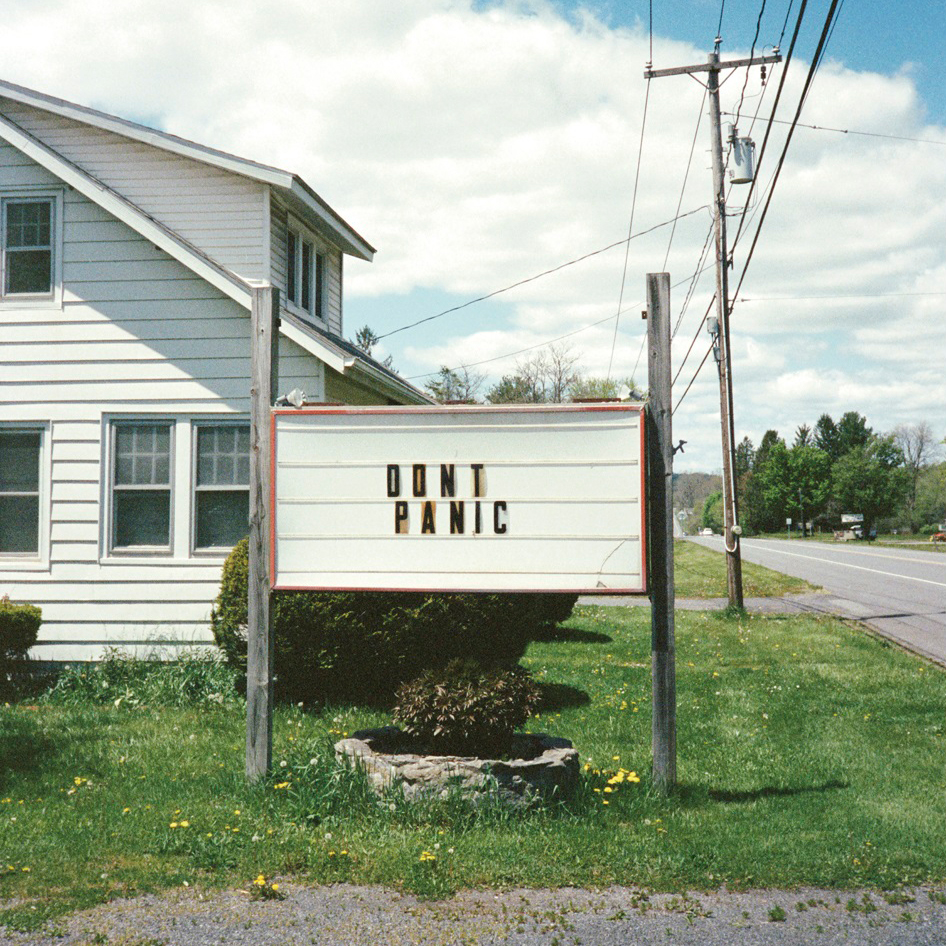
Terry Richardson
テリー・リチャードソン
1965年、NY生まれ。写真家のボブ・リチャードソンを父に持つ。ハリウッドで育ち、パンクバンドを組んでいる高校在学中に写真を撮り始める。Supreme, GUCCI, Yves Saint-Laurent, MIU MIUなどのキャンペーン広告をはじめ、『VOGUE』『i-D』『GQ』『Harper’s Bazaar』『purple』などの世界各国のファッション誌のカバーストーリーやエディトリアルページも多数撮影。また、デニス・ホッパーやヴィンセント・ギャロ、クロエ・セヴィニー、JAY-Z、ファレル・ウィリアムスなど錚々たる著名人のポートレイトも撮影してきた。ファッション業界はもとより、アートシーンや写真界に与えたテリーの影響力と功績は計り知れない。1998年、HYSから出版した『TERRY RICHARDSON : HYSTERIC GLAMOUR』が、自身初めての作品集だった。
Born in 1965 in New York City. Photographer Bob Richardson as father. Grew up in Hollywood and began taking photographs while in high school playing in a punk band, and has shot campaign ads for Supreme, GUCCI, Yves Saint-Laurent, MIU MIU, and others, as well as cover stories and editorial pages for VOGUE, i-D, GQ, Harper's Bazaar, and Purple, as well as numerous cover stories and editorial pages for fashion magazines around the world. He has also photographed portraits of Dennis Hopper, Vincent Gallo, Chloë Sevigny, JAY-Z, Pharrell Williams, and many other celebrities. Terry's influence and achievements in the fashion industry, art scene, and photography are immeasurable. 1998's “TERRY RICHARDSON : HYSTERIC GLAMOUR,” published by HYS, was his first book of work.
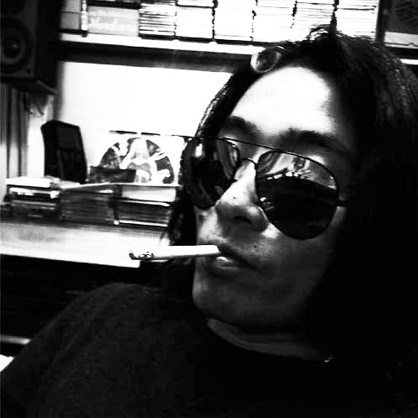
北村信彦
1962年東京生まれ。東京モード学園を卒業した1984年、(株)オゾンコミュニティに入社。同年、21歳でHYSTERIC GLAMOURをスタート。10代半ばから猛烈にアディクトするロックミュージックを礎に、ブランド設立当初ロックとファッションの融合をいち早く見出したコレクションを提案。ソニック・ユースやプライマル・スクリーム、パティ・スミス、コートニー・ラブをはじめとして数多なアーティストたちと親交を深める。
一方、ポルノグラフィティやコンテンポラリーアートなどにも傾倒、その感性はHYSTERIC GLAMOURの代名詞の1つでもあるTシャツでも表現している。また、テリー・リチャードソンや森山大道、荒木経惟をはじめとする写真作家の作品集を自主制作・出版するなど、現代写真界にも深く携わる。
Nobuhiko Kitamura was born 1962 in Tokyo, Japan. He began working for Ozone Community Corporation straight after he graduated Tokyo Mode Gakuen in 1984. That same year he started Hysteric Glamour at the age of 21. From the beginning, his collections were inspired by rock music that he was hooked on since his early teen years. He is one of the forerunners to introduce collections that integrated rock and fashion. His love of rock and his talent has brought him close to stars such as Sonic Youth, Primal Scream, Patti Smith, and Courtney Love. His artistic sensibility and attraction to vintage pornography and contemporary art is expressed through Hysteric Glamour t-shirts, which have become a staple of the brand. He also is deeply involved in the photography industry by self-producing and publishing artwork of photographers such as Terry Richardson, Daido Moriyama, and Nobuyoshi Araki.

